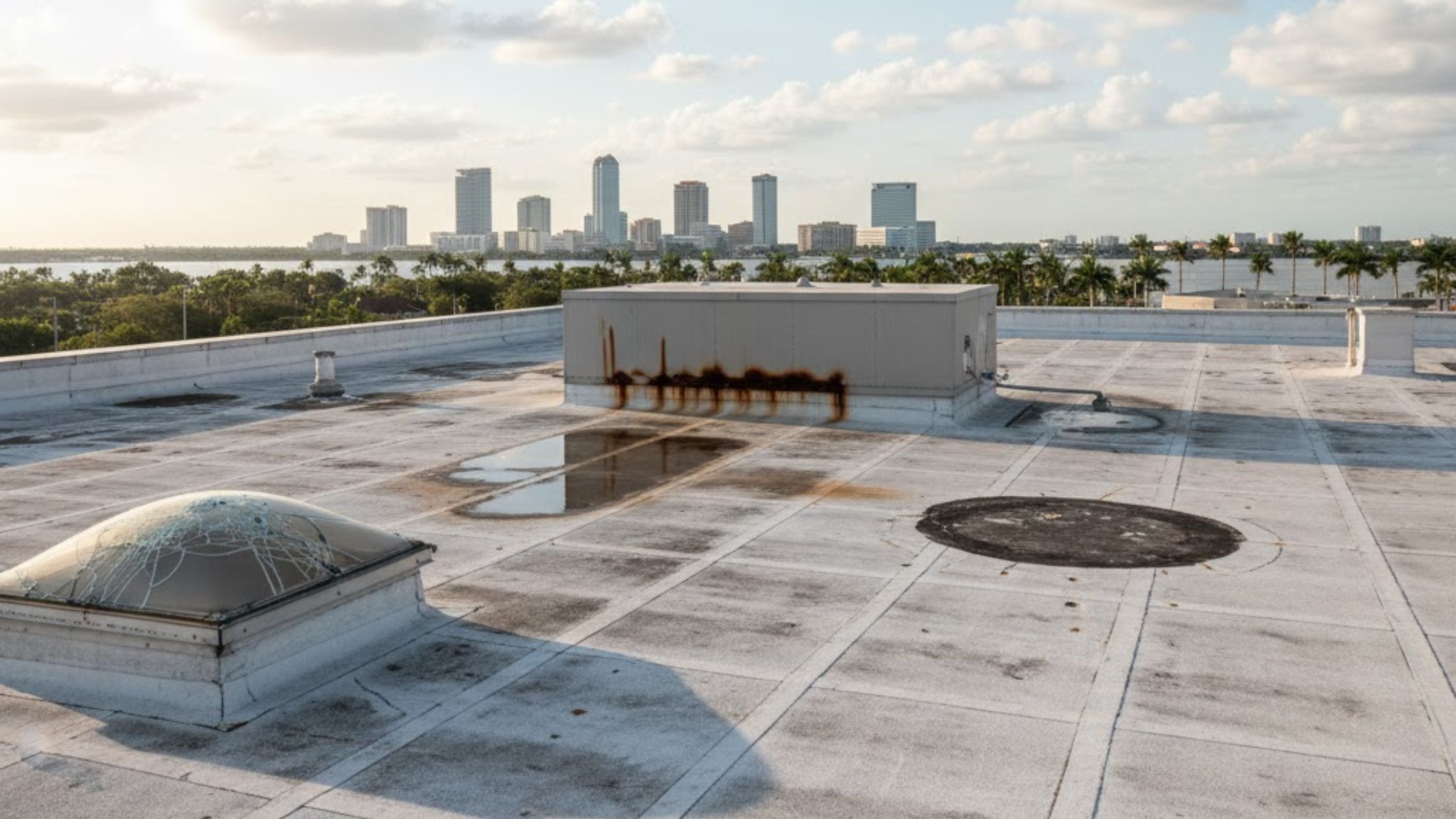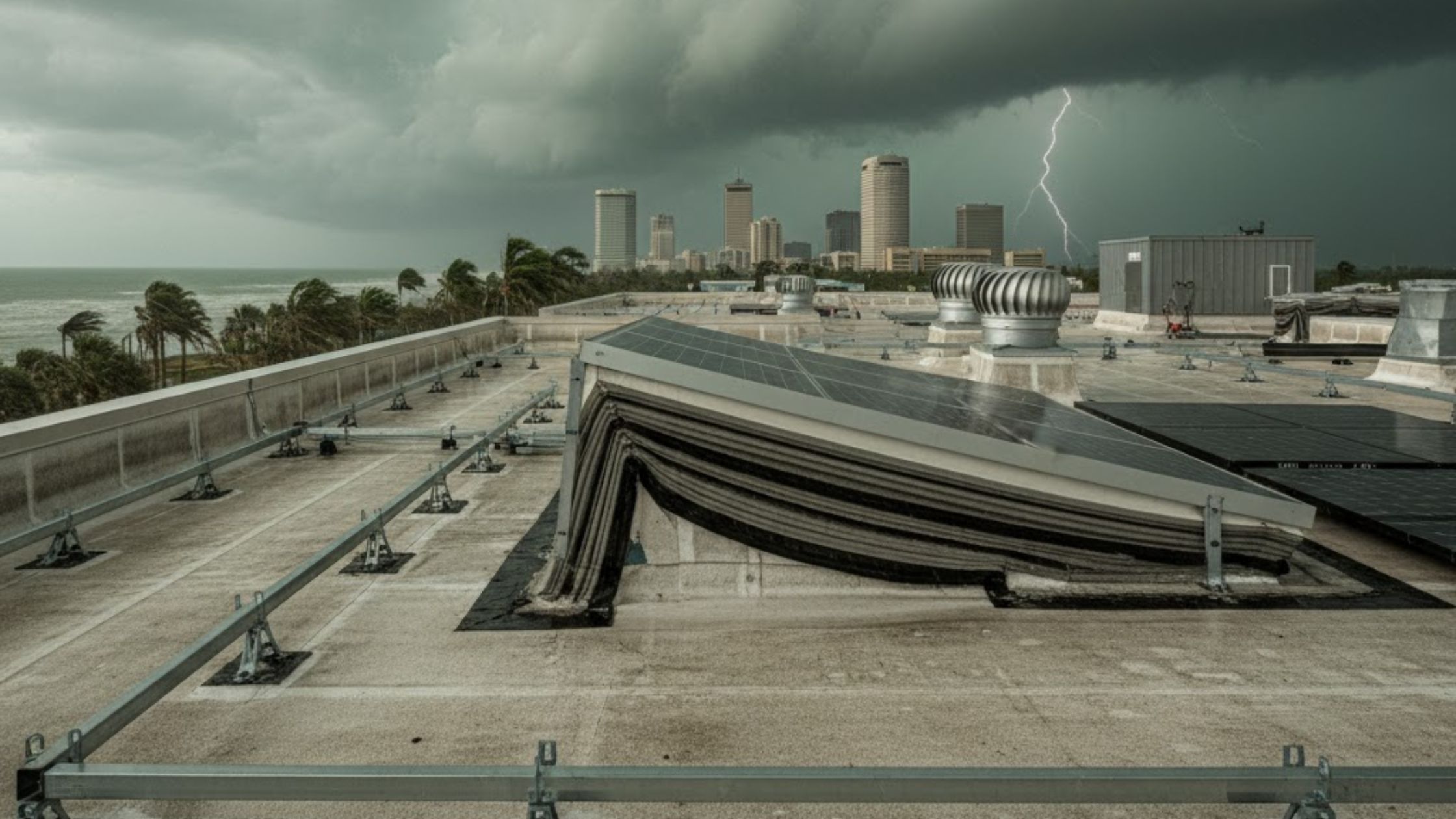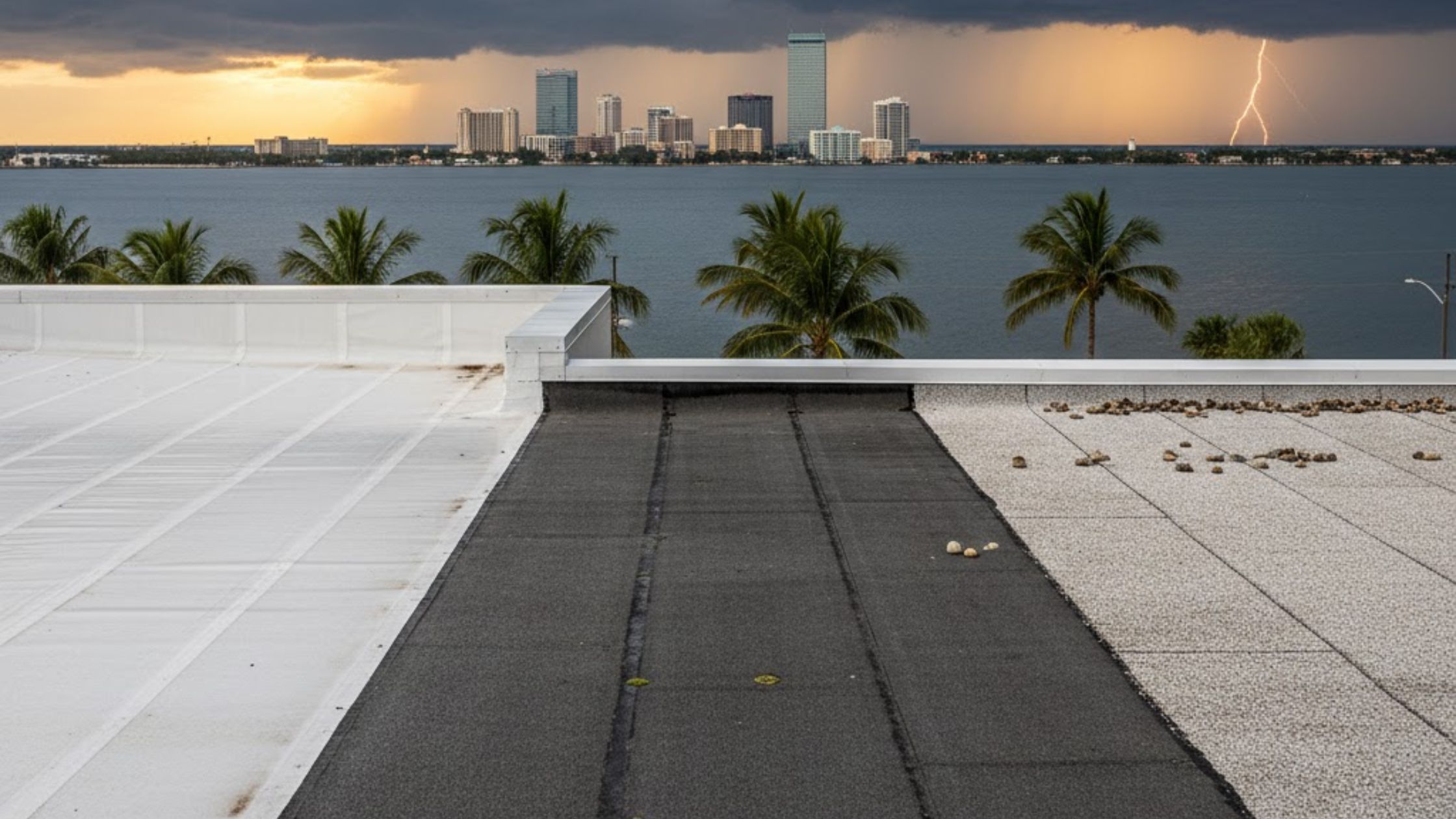How Does Roof Insulation Impact Commercial Energy Performance in Tampa’s Hot Climate?
Boost energy efficiency in Tampa’s hot climate with roof insulation. Lower cooling costs, improve comfort, and extend roof life. Discover proven benefits now!
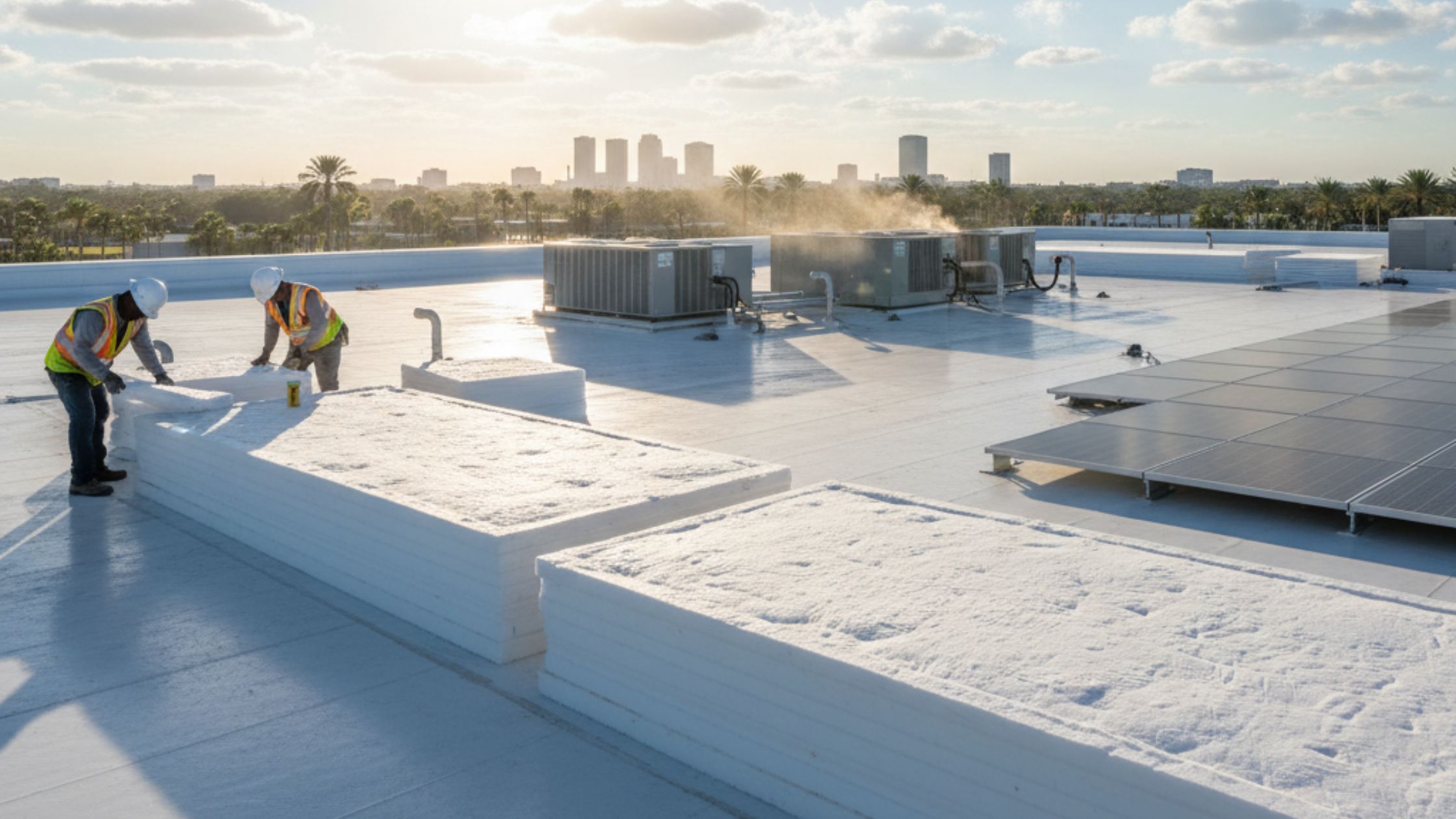
If you manage a commercial property in the Tampa Bay area, you know the relentless Florida heat is a constant challenge, not just for tenant comfort but for your bottom line. Energy bills can skyrocket during the summer months as your HVAC systems work overtime battling the heat gain pouring through an under-insulated roof. This struggle directly affects your operational efficiency and long-term costs. The solution to this common headache lies directly above you, in a high-performance commercial roof insulation system, a vital component of successful Commercial Roofing Tampa.
Investing in superior roof insulation is one of the most impactful decisions you can make for your commercial building’s financial health and environmental footprint. It transforms your roof from a heat-absorbing sponge into a thermal shield, significantly reducing the burden on your air conditioning units. For any property owner, developer, or facility manager in this region, understanding the science and solutions for Tampa heat reduction roofing is not just smart business—it's essential for achieving peak energy performance and ensuring energy code compliance roofing.
What is the Recommended R-Value for Commercial Roof Insulation in Tampa's Climate Zone?
The R-value is the measure of thermal resistance, or how well a material resists the conductive flow of heat. In a perpetually hot climate like Tampa’s, a high R-value is crucial because it directly translates to less heat moving from the blistering roof surface into the cool interior space. The specific code requirements can vary based on building type and jurisdiction, but the Florida Building Code and current energy standards provide clear guidelines for commercial structures in this climate zone.
For commercial low-slope (flat) roofs in the Tampa area's climate zone, the typical minimum R-value requirement specified by building codes is often R-20, R-25, or sometimes higher for new construction or significant renovations. However, simply meeting the minimum code is often insufficient for achieving optimal energy savings and maximum ROI in a commercial setting. Expert recommendations for energy-conscious buildings frequently suggest installing an R-value of R-30 or more to truly mitigate the intense solar heat gain.
Achieving the right R-value involves selecting the appropriate insulation materials and ensuring correct installation depth and technique. A higher R-value means a thicker or more effective insulation layer, and in Tampa, this added defense against heat transfer results in noticeable reductions in your cooling load and utility expenses. This is a critical factor when planning your project, as the initial investment in higher-R-value materials is quickly recouped through long-term energy savings.
The Science of Heat Transfer and the Role of Commercial Roof Insulation
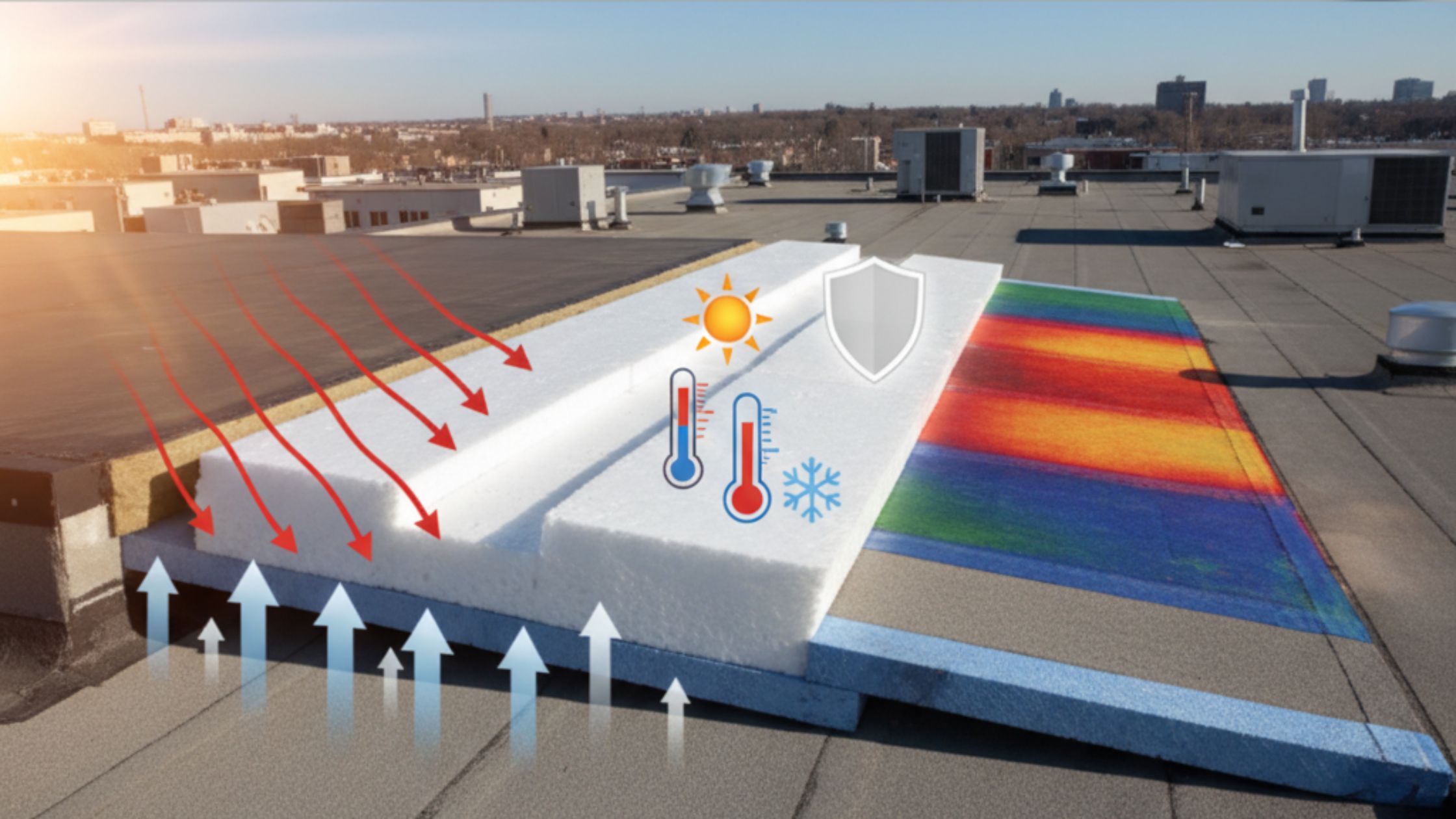
To appreciate the value of proper insulation, you must first understand the three primary ways heat transfers through a commercial roof structure. These are conduction, convection, and radiation, all of which are working constantly to move heat from the sun and the warm outside air into your cool, conditioned indoor environment, particularly in a region experiencing significant Tampa heat reduction roofing challenges.
Conduction is the direct transfer of thermal energy through contact, such as when the sun heats the exterior roofing material, and that heat is then passed molecule-by-molecule through the roof layers and into the structure below. Insulation materials are inherently poor conductors of heat, creating a thermal break that dramatically slows this process. Choosing a material with a high R-value ensures maximum resistance to conductive heat flow.
Convection occurs when heated air rises and moves, transferring energy. In a commercial roof assembly, air movement is typically minimized by a well-sealed system, but air leaks and penetrations can allow outside air to enter and warm the ceiling plenum. High-quality roof insulation, combined with proper air sealing, helps to manage the air barrier and prevent this convective heat transfer, maintaining a stable temperature inside the building.
Radiation is the transfer of heat in the form of electromagnetic waves, like the intense infrared energy from the sun. This is where reflective surfaces, often paired with insulation, play a vital role. While insulation addresses conductive heat, a radiant barrier or a "cool roof" membrane is designed to reflect solar radiation away from the roof's surface, reducing the initial temperature of the roofing material and lessening the total heat load the insulation has to manage.
The Thermal Envelope and HVAC Strain
The roof is arguably the most critical component of a commercial building’s thermal envelope in Florida. It is the largest surface exposed to direct solar radiation for the longest duration each day. Without sufficient commercial roof insulation, the roof deck and structure can become intensely hot, essentially radiating heat down into the facility.
This excessive heat gain forces the building's HVAC system—Heating, Ventilation, and Air Conditioning—to run almost continuously, greatly increasing electricity consumption and causing premature wear on expensive equipment. Proper insulation lowers the cooling load demand, allowing your HVAC unit to cycle less frequently, which extends its lifespan, reduces maintenance costs, and saves significant money on monthly energy bills. The total impact on long-term capital planning is enormous.
The energy savings achieved through an optimized roof system contribute directly to a more attractive and sustainable property, which is increasingly valuable in the Tampa commercial roofing for energy savings market. Modern building science and energy models consistently show that the roof is the single greatest opportunity for improving a commercial structure's overall energy performance and efficiency.
Choosing the Right Commercial Roof Insulation Materials
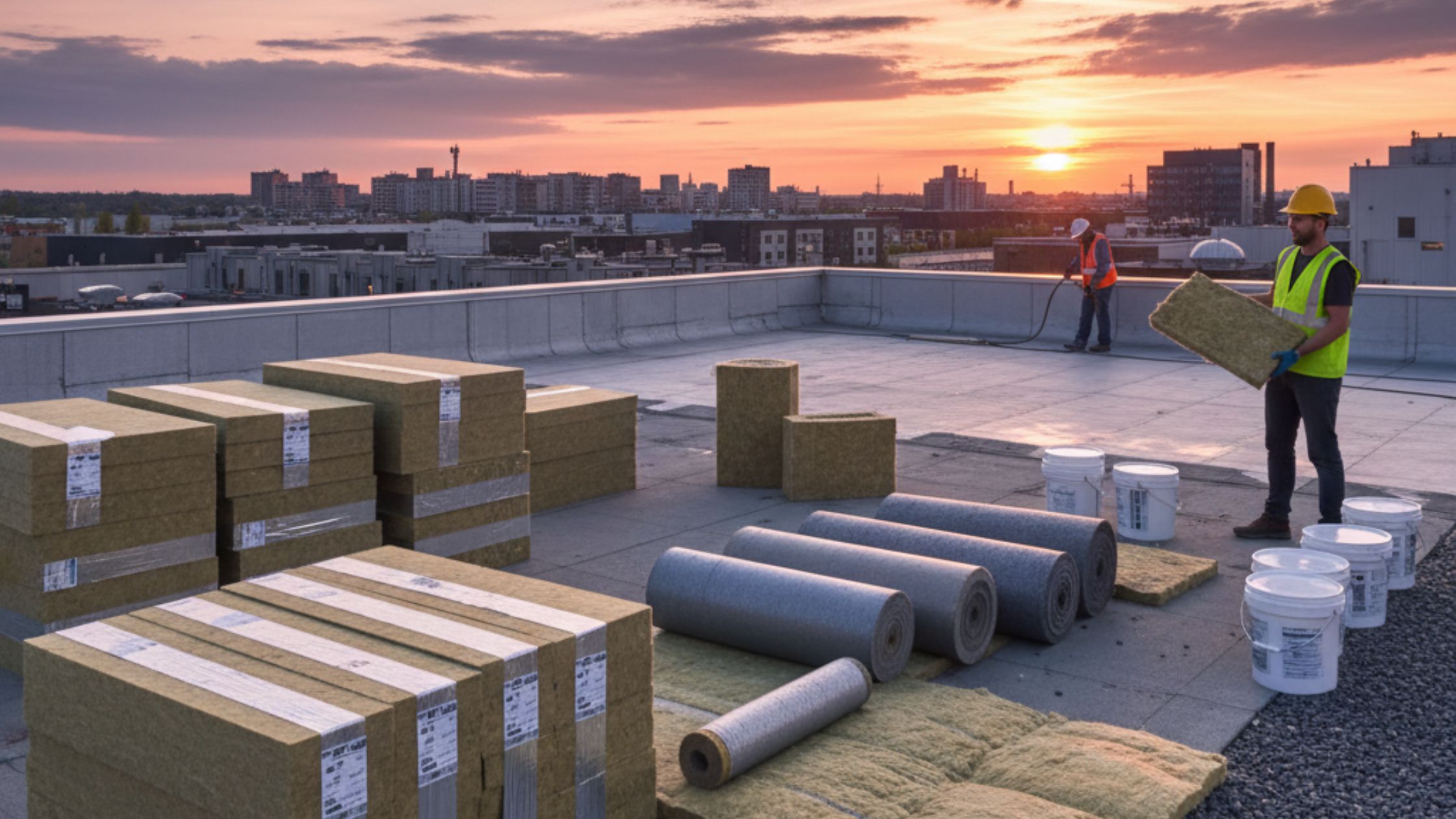
Selecting the correct type of insulation is a multifaceted decision that depends on your roof type (e.g., flat, low-slope, or pitched), your budget, and the specific performance goals you are trying to achieve. Each material offers a different balance of R-value per inch, moisture resistance, compressive strength, and cost. Understanding these properties is key to a successful commercial roof insulation project in Tampa's humid climate.
Polyisocyanurate (Polyiso) Insulation
Polyiso is one of the most popular and widely used rigid foam insulation materials for commercial flat roofs. It offers one of the highest R-values per inch, which allows you to achieve the required thermal resistance without excessive thickness. This material is lightweight, durable, and highly effective at thermal resistance, making it an excellent choice for new construction and re-roofing projects.
Polyiso is typically manufactured as board stock and can be installed in multiple layers to prevent thermal bridging across joints. Many products are faced with a fiberglass mat or other material that makes them compatible with single-ply membranes like TPO and EPDM. Its high performance-to-thickness ratio is often the most cost-effective solution for meeting the demanding insulation requirements of commercial properties in the region.
Expanded Polystyrene (EPS) and Extruded Polystyrene (XPS)
Polystyrene insulation comes in two forms, each with unique advantages. Expanded Polystyrene (EPS) is a cost-effective, lightweight foam plastic insulation commonly used in tapered systems, which are essential for creating slope on a flat roof to promote proper drainage and prevent ponding water. Extruded Polystyrene (XPS), often recognizable by its blue or pink color, offers a consistent, higher R-value than EPS and superior moisture resistance, making it a strong choice for applications that may be subject to moisture, such as the Inverted Roof Membrane Assembly (IRMA) system.
The structural integrity of these rigid boards is important, as commercial roofs often need to withstand equipment, maintenance foot traffic, and the weight of rooftop units. Both EPS and XPS offer good compressive strength, though XPS generally performs better in this regard, a necessary consideration for durability on a busy Commercial Roofing Tampa project.
Spray Polyurethane Foam (SPF)
Spray Polyurethane Foam (SPF) is a unique, highly effective commercial roof insulation system that is spray-applied as a liquid and expands to form a seamless, monolithic layer. SPF not only offers a very high R-value per inch but, more critically, provides an exceptional air and moisture barrier. This seamless application eliminates the air gaps and thermal leaks often associated with board stock insulation.
In a humid environment like Tampa, SPF’s ability to prevent air infiltration and act as a water barrier is a huge advantage. It's often used in conjunction with a protective elastomeric coating which reflects solar energy, creating a high-performance, energy-efficient "cool roof" that dramatically improves Tampa heat reduction roofing performance.
The Role of Cool Roof Technology in Maximizing Energy Savings

Insulation is the primary defense against conductive heat transfer, but in Florida, you must address the radiant heat from the sun. This is where cool roof technology comes into play, working in tandem with your insulation to deliver maximum energy efficiency. A cool roof is defined by its ability to reflect sunlight (solar reflectance) and emit absorbed heat (thermal emittance).
Reflective roofing materials, such as light-colored TPO (Thermoplastic Polyolefin) or specialized elastomeric roof coatings, minimize the amount of heat absorbed by the roof surface. A dark, non-reflective roof can reach temperatures 90-100 degrees Fahrenheit higher than the ambient air temperature. A highly reflective cool roof, on the other hand, keeps the roof surface much cooler.
This reduction in surface temperature means less heat is transferred into the insulation layer and subsequently into the building, which is the definition of effective Tampa heat reduction roofing. Combining a high-R-value commercial roof insulation system with a reflective cool roof membrane is the gold standard for energy performance in the southern United States.
Financial and Regulatory Impact of High-Performance Roof Insulation
The decision to upgrade or install new commercial roof insulation is not just an operational one; it's a financial and regulatory imperative. The upfront cost of a high-performance system must be weighed against the massive long-term savings and compliance benefits. The return on investment (ROI) for quality insulation is often surprisingly fast, thanks to reduced utility bills.
Significant Reduction in Operational Costs
The most immediate and tangible benefit is the reduction in energy consumption. The U.S. Department of Energy estimates that a substantial amount of a commercial building’s energy use is dedicated to heating and cooling. In Tampa, that number is heavily skewed toward cooling. By minimizing heat gain through the roof, your facility manager will see a sharp drop in your monthly electricity bills.
Lower energy costs mean more capital is available for other business operations, significantly improving the net operating income (NOI) of the property. For a multi-family complex or a retail center, these savings enhance the property’s overall valuation, providing a strong argument for owners and investors to prioritize high-quality commercial roof insulation.
Ensuring Energy Code Compliance Roofing
Tampa and the state of Florida operate under strict building codes, including those related to energy efficiency. Specifically, the Florida Building Code (FBC) sets minimum requirements for insulation R-values to ensure all new and renovated commercial structures meet specific energy performance standards.
Failing to meet these standards can result in costly project delays or require expensive retrofits later on. A professional Commercial Roofing Tampa contractor will ensure that your insulation materials and installation methods not only meet but exceed the FBC's energy code compliance roofing requirements, mitigating risk and ensuring a smooth permitting and inspection process. Furthermore, financing option may be available for energy-efficiency upgrades.
Leveraging Incentives and Rebates
Another significant financial benefit comes from local utility and federal incentives. Companies like Tampa Electric (TECO) often offer rebates or incentive programs for business owners who invest in energy-efficient upgrades, such as high-R-value roof insulation or the installation of a reflective cool roof. These programs are designed to reduce the peak power demand on the local electrical grid.
Beyond local rebates, commercial building owners may qualify for federal tax credits or deductions, such as those related to the Inflation Reduction Act (IRA), for making energy-efficient improvements. It is highly recommended that commercial property owners explore their options for Commercial roofing financing and tax incentives in Tampa to offset the initial investment, making the upgrade financially accessible and immediately profitable.
Advanced Commercial Roof Insulation Systems and Techniques
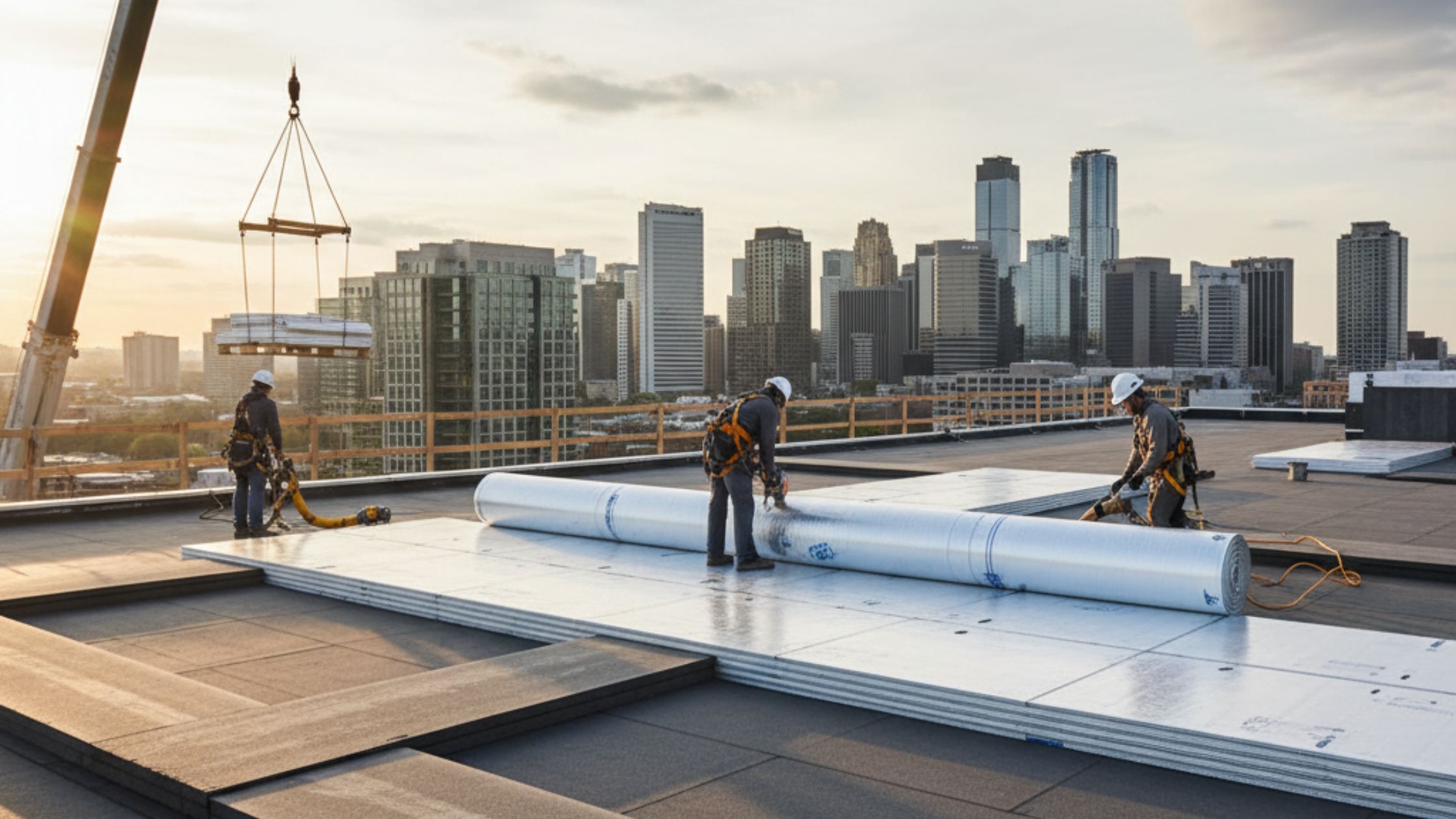
The best commercial roof insulation is not just about the material; it’s about the entire system and the precision of the installation. For low-slope and flat roofs, which are dominant in Tampa’s commercial landscape, several advanced techniques are used to maximize energy performance and structural integrity.
Tapered Insulation Systems
Flat commercial roofs, by definition, have a minimal slope, which means water drainage can be a constant concern. Tapered insulation boards are designed to create a slight slope, or 'pitch,' on a flat roof deck, directing stormwater runoff toward drains and scuppers. This is an essential design component in Florida, where intense rainfall and high humidity are common.
Tapered systems prevent ponding water, which is a leading cause of premature roof failure and compromised insulation. The insulation's core function is thermal resistance, but when it becomes saturated with water, its R-value can be completely nullified. Tapered insulation is an integrated solution that supports both energy performance and long-term structural resilience.
Vapor Barriers and Moisture Control
In humid climates like Tampa, managing moisture is almost as critical as managing heat. Warm, moist air from the building interior can migrate through the roof assembly and condense when it hits a colder surface, leading to moisture saturation within the insulation. This condensation dramatically reduces the R-value and can lead to the deterioration of the roof system and the growth of mold or mildew.
To combat this, a high-quality vapor barrier is often installed directly under the insulation layer. The vapor barrier is an essential part of the roofing system that prevents the movement of moisture from the conditioned space into the insulation, preserving the R-value and ensuring the longevity of the entire roof assembly. This is non-negotiable for true energy code compliance roofing.
Hybrid Systems for Optimal Performance
In many cases, the most effective Commercial Roofing Tampa solution is not a single material but a hybrid roof system. For instance, a contractor might use multiple layers of Polyiso board to achieve the bulk R-value, then cap it with a highly reflective white TPO membrane. Another approach might involve using Spray Polyurethane Foam (SPF) to seal and insulate a structurally complex roof, followed by an elastomeric coating to provide long-term UV protection and reflectivity.
These hybrid solutions are tailored to the specific needs of the building, taking into account factors like the existing deck material, the structural load limits, and the presence of complex rooftop equipment, such as HVAC units and solar panels. A seasoned professional understands how to blend these components for maximum performance and cost-effectiveness.
Long-Term Benefits Beyond Energy Savings
While the financial return from reduced energy consumption is the most direct benefit, a high-performance commercial roof insulation system provides numerous advantages that contribute to the overall value and functionality of your commercial property. These benefits extend to indoor air quality, comfort, and noise reduction.
Improved Indoor Comfort and Air Quality
Proper insulation helps regulate the indoor temperature, eliminating hot and cold spots that can make a commercial space uncomfortable for employees, tenants, or customers. Consistent interior temperatures lead to increased occupant satisfaction and productivity, which is a major factor for tenant retention in commercial leasing.
By serving as an air barrier, a quality insulation system also helps prevent the infiltration of outdoor allergens, pollutants, and moisture, leading to better overall indoor air quality. This is particularly important for healthcare facilities, offices, and retail spaces where a stable and clean environment is paramount.
Noise Reduction and Acoustics
Beyond thermal performance, many insulation materials, such as mineral wool and dense foam boards, offer significant acoustic benefits. They help to dampen exterior noise from traffic, weather, and nearby construction, creating a quieter and more focused work environment inside the building.
For commercial buildings located in busy or industrial areas, this added layer of sound-dampening insulation is a valuable, often overlooked benefit. This contribution to the internal environment further enhances the perceived quality of the commercial space, adding to its value.
Partnering with the Right Commercial Roofing Tampa Expert
The final, and perhaps most crucial, step in this entire process is selecting a reputable commercial roof insulation and Commercial Roofing Tampa contractor. Even the best materials will fail if they are not installed correctly, especially when dealing with the Florida climate's extreme heat and moisture challenges.
An expert contractor will begin with a comprehensive roof inspection and energy audit to accurately assess your current roof's condition, identify thermal bridging issues, and determine the optimal R-value needed for your specific building. This technical analysis ensures that the proposed solution is perfectly matched to your needs and budget.
Look for a partner with extensive experience in local building codes and regulations, especially those pertaining to energy code compliance roofing. Their expertise will not only ensure compliance but will also help you navigate the process of securing permits, leveraging utility rebates, and understanding the long-term maintenance requirements of your new roofing system.
They should offer a range of materials, including Polyiso, XPS, and SPF, and be proficient in installing complex components like tapered systems and vapor barriers. A true professional views the roof as an integrated system, not just a surface covering, and will ensure all elements—membrane, insulation, and flashing—work together harmoniously. When it comes to managing the long-term structural and energy needs of your property, getting the right expert is non-negotiable.
Frequently Asked Questions About Commercial Roof Insulation in Tampa
Q: What is the biggest difference between commercial roof insulation and residential insulation?
Commercial roof insulation systems, particularly for flat or low-slope roofs, are fundamentally different because they must withstand higher compressive loads from rooftop equipment and maintenance traffic, and they are typically installed as rigid boards or a seamless foam layer, often exposed directly under the waterproof membrane. Residential insulation is usually fiberglass batt or blown-in material installed in the attic space, which is not subjected to the same structural demands.
Q: Does a cool roof membrane eliminate the need for insulation?
No, a cool roof membrane does not eliminate the need for insulation. A cool roof primarily addresses radiant heat transfer by reflecting sunlight, which keeps the roof surface cooler. Insulation addresses conductive heat transfer, which is the heat that still moves through the material layers. For a truly energy-efficient building in Tampa, you need both: a reflective cool roof to reduce the initial heat load and high-R-value insulation to resist the remaining heat transfer.
Q: How long does it take for commercial roof insulation to pay for itself?
The payback period, or the time it takes for the monthly energy savings to equal the initial cost of the insulation upgrade, varies depending on the building's current insulation level, the R-value installed, and the cost of energy. However, for a commercial building in a hot climate like Tampa that is replacing poor or non-existent insulation, the payback period is often surprisingly short, typically ranging from 3 to 7 years due to significant reductions in HVAC usage and potential rebate incentives.
Q: Is a vapor barrier necessary for a commercial roof in Tampa's high humidity?
Yes, a vapor barrier is highly recommended, and often code-required, in Tampa's high-humidity climate. The warm, moist air inside the conditioned space will naturally travel toward the cold roof deck, and without a vapor barrier, this moisture will condense inside the insulation layer. When commercial roof insulation gets wet, its R-value can be severely degraded, compromising its thermal performance and leading to long-term roof system damage.
Q: Can insulation help protect my roof from storm damage in Florida?
While insulation's primary role is energy performance, a fully adhered or mechanically attached insulation system can actually add stability to the roof assembly. By securing the waterproof membrane to the roof deck, it helps to resist the powerful uplift forces generated by high winds during tropical storms and hurricanes, a crucial benefit for any structure in the Tampa Bay area.
Understanding the Economics of Commercial Roof Insulation
The initial capital expenditure for a new or retrofitted commercial roof insulation system may seem high, but shifting your perspective from initial cost to lifecycle cost is essential for savvy property management. The economic argument for high-performance insulation in Tampa is overwhelming when you consider the totality of expenses over a 20 to 30-year roof lifespan.
The most substantial recurring cost for a commercial building in Florida is the energy required to run the air conditioning. This cost is not fixed; it rises annually with utility rate increases and as your aging, uninsulated roof continues to degrade. A high-R-value roof effectively locks in lower energy costs for decades, acting as a financial hedge against rising electricity prices.
Beyond the monthly utility savings, consider the reduced demand on your HVAC systems. By cutting the cooling load, you decrease the hours your units run, which translates directly to fewer maintenance calls and a significantly longer lifespan for your expensive air conditioning equipment. This reduction in the capital reserve fund needed for HVAC replacement is a major, often overlooked, financial benefit of optimizing your commercial roof insulation.
This is why many leading property investors view a roof insulation upgrade as a capital expenditure that yields a high rate of return, rather than simply a maintenance expense. The improvement in the building's energy efficiency makes it a more attractive asset, often qualifying it for green building certifications which can command higher lease rates and sale prices.
A detailed energy analysis will demonstrate how the combination of insulation and reflective materials creates a positive cash flow almost immediately when accounting for utility savings and available financial incentives. Building this analysis into your long-term asset management plan will show that investing in quality Commercial Roofing Tampa is not just an option—it is the financially responsible decision.
Deep Dive into R-Value and Material Performance
The R-value of the insulation material is just one part of the equation; the R-value of the entire roof system is what truly matters. Thermal bridging, which occurs when heat bypasses the insulation through less resistant components like fasteners or structural elements, can significantly reduce the effective R-value of the system.
Installing multiple layers of insulation board with staggered joints helps mitigate thermal bridging at the seams, ensuring a continuous layer of thermal resistance. The thickness of the material is directly proportional to its R-value, but some materials, like Polyiso and SPF, offer a higher R-value per inch, allowing for a thinner, lighter assembly while achieving the same performance.
For instance, closed-cell Spray Polyurethane Foam (SPF) can provide an R-value of R−6 to R−7 per inch, making it exceptionally effective. In contrast, standard fibrous insulation might only achieve an R−value of R−3.5 per inch. This technical difference allows skilled contractors to use high-performing materials to meet strict energy code compliance roofing requirements with a minimal increase in roof height or structural load.
The long-term performance of the R-value is also crucial. Rigid foam insulation materials are generally stable, but moisture saturation will degrade the R-value of any material. This brings us back to the importance of the vapor barrier and ensuring that the entire roof is watertight, protecting the commercial roof insulation investment over its lifetime.
Case Study: Retrofitting for Tampa Heat Reduction Roofing
Consider a typical commercial warehouse in the Tampa industrial park, built 20 years ago with minimal insulation that only meets the former, less stringent energy codes. This building now struggles with high interior temperatures, tenant complaints, and crushing summer utility bills. This is a common scenario that presents a prime opportunity for a significant Tampa heat reduction roofing upgrade.
The retrofit project involves removing the existing non-compliant roof and installing a new, high-performance system. The first step would be to ensure a continuous vapor barrier is in place. Next, multiple layers of Polyisocyanurate (Polyiso) insulation would be mechanically fastened to the deck, creating a total system R-value of R−30. Finally, a highly reflective, white TPO single-ply membrane would be adhered over the insulation.
The result of this integrated solution is immediate and measurable. The reflective TPO membrane drastically reduces the heat absorbed by the roof surface, cutting the initial heat load. The high-R-value Polyiso then resists the remaining conductive heat transfer. This dual-action system drastically lowers the interior temperature and, more importantly, reduces the cooling cycle of the building's air conditioning units by a calculated 30−50%.
This case study exemplifies how modern commercial roof insulation and membrane technology can transform an energy-draining liability into a high-performing, sustainable asset. The initial cost is quickly overshadowed by the substantial, recurring financial benefit and improved tenant satisfaction, solidifying the economic argument for superior Commercial Roofing Tampa solutions.
Conclusion: Securing Your Commercial Future with CB Roofing Solutions
The intense solar heat and high humidity of the Tampa Bay area make proper commercial roof insulation a mission-critical component of any commercial building's strategy for energy performance, operational cost control, and regulatory adherence. From understanding the physics of heat transfer and the importance of a high R-value to strategically selecting materials like Polyiso, XPS, or SPF, every decision related to your roof directly impacts your building's long-term financial health. A high-performance roof is not just a protective barrier; it is one of the single best investments you can make to reduce your carbon footprint, secure ongoing utility savings, and ensure energy code compliance roofing.
For property owners seeking to maximize their asset value and minimize operating expenses, the integrated approach of combining superior insulation with a cool roof membrane is the ultimate solution. By leveraging local incentives and working with experienced professionals, you can achieve a rapid return on investment and enjoy decades of reduced energy costs. When you are ready to implement a high-performance Commercial Roofing Tampa solution tailored to the unique demands of the Florida environment, trust the expertise of CB Roofing Solutions. We provide comprehensive commercial roof insulation and roofing services designed for sustainability, performance, and peace of mind.

